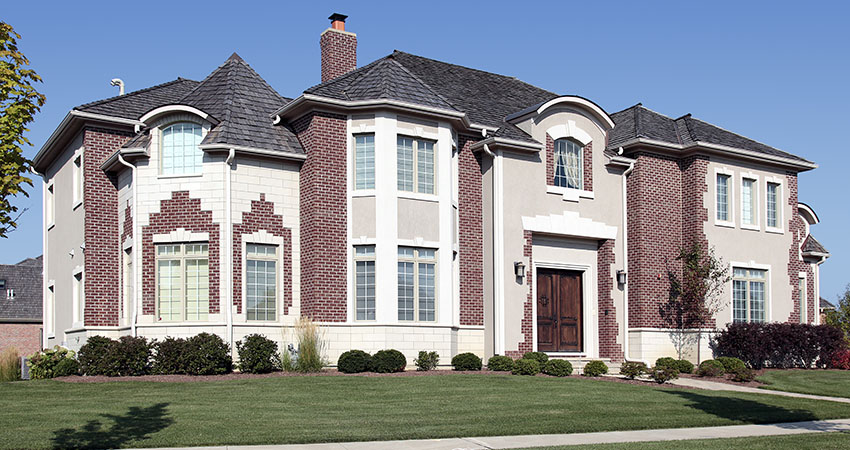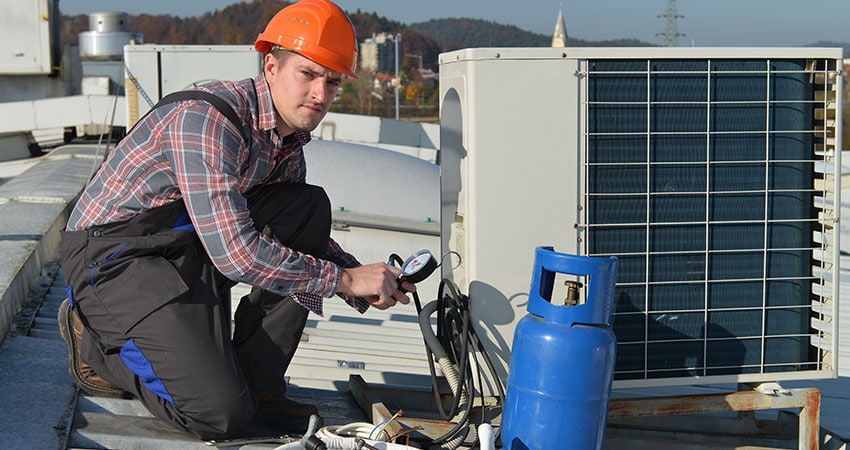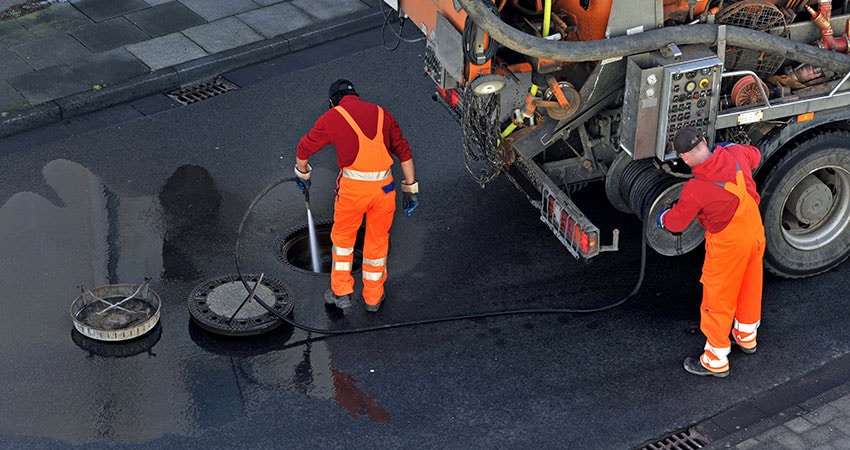Chimneys need to be waterproof to prevent water from damaging the brick and mortar. Chimneys can withstand the test of time but only if you maintain them and perform chimney inspection and repair when required. In most cases, the leakage goes unnoticed unless there is some visible damage. We are going to share some tips that will help protect your chimney from water damage.
Waterproofing A Chimney
The first step when it comes to waterproofing a chimney is identifying the source of the leak. If the water happens to be coming from the top, it most likely means that you will need to reseal the crown. But if the leak is existing somewhere in the bottom or the middle part of the chimney, it most likely means you will need to replace some brick and mortar.
Once you have detected the source of the leak, it is time to repair it. If the leak is from the top, you will need to reseal the crown using high-quality products. Keep in mind that sealing products might look the same but differ in characteristics.
This means that you will need to have some knowledge and information to help pick the right option. If possible, consult an expert who will guide you through the process.
And now that you have purchased the sealant, begin removing the leaking parts of the chimney. Prepare some new mortar and fill in the gaps. Replace the bricks and make sure the mortar is in place. Allow the mortar to settle in and cure for some time and then, use a waterproofing product to waterproof the entire chimney. This will help protect the entire chimney from water damage.
In some instances, a leak from a roof is from the chimney. So, a waterproofed chimney will not only protect the chimney, but your house’s roof as well. However, to make sure you’re on the right track, get your chimney inspected by an expert annually. Plus, it’s better to let an expert waterproof your chimney.
How To Choose The Right Chimney Waterproofing Product?
As mentioned earlier, choosing the right waterproofing product requires information. Considering there is a huge variety out there, it is normal for homeowners to become confused. Water-repellent coating or sealant are two different products in the market today that people are not able to differentiate between.
On the other hand, part of choosing the right waterproofing product requires you to be familiar with the type of chimney. There are two common types i.e. masonry and prefabricated. Masonry chimneys are the most common as they are made using brick and mortar.
Meanwhile, prefabricated chimneys are made using metal and other materials. Knowing what your chimney is made of will help you narrow down the options as waterproofing products can be expensive. That said, you should be able to pick a product that matches the needs of your chimney.
Products specifically made for brick and mortar chimneys will not work for metal chimneys. Once you have picked the right option, you will need to follow the instructions carefully to properly apply the sealant.
Another thing to keep in mind is there are two types of sealants, water-based and solvent-based. The basic difference between the two is the application. Water-based sealants are easier to apply than solvent-based sealants. However, the later are considered more durable than the former.
How Is Chimney Waterproofing Applied?
Depending on the type of the waterproofing product, the application technique and instructions may differ. As a general rule of thumb, the chimney or the damaged area needs to be properly cleaned before the sealant can be applied.
After the sealant has been applied, it should be left to settle in and cure for a while. The curing process will depend on external factors like the weather. It will take relatively longer for the sealant to cure if there is rain, snow, or extremely cold temperatures. However, during the summer season, the curing process will be a lot quicker.
How Do You Waterproof An Old Brick Chimney?
Waterproofing an old brick chimney involves using the same steps. First, determine where the leak it. Next, inspect the intensity of damage. Then, you will need to choose the right waterproofing product. Make sure to read the instructions on the product to make sure the product is specifically made for masonry chimneys.
Once that is done, you will need to thoroughly clean the chimney and remove leaking bricks and mortar. Apply the sealant and leave it for a few hours. However, keep in mind that not every leakage can be fixed using a sealant.
If the chimney has been ignored for years, it most likely means there is structural damage. In this case, you might have to carry out chimney repair Columbia MD. In some case, you may have to rebuild the entire chimney. To make sure, consult an expert.
What’s The Cost Of Chimney Waterproofing?
On average, the cost of waterproofing a chimney is around $500. This can vary depending on the type of chimney, the damage, and the product you will choose to waterproof the chimney. If the product takes special skills and techniques to apply, the cost will be slightly higher.
One way to cut costs is by doing it all yourself but there are risks attached. Waterproofing a chimney might seem a simple task but you have to vary certain things. First, there is a risk of injury climbing the roof. Secondly, if you haven’t applied the sealant before, you are most likely to make mistakes.
After spending money on buying an expensive sealant and putting in effort and time to apply it, there are chances that it will still leak if the preparations are not done properly. Therefore, to avoid such situations, spend a little more and hire a professional.
This way, you will not miss out on the little things that may cost you big time in the future.
Why Do Chimneys Need Professional Maintenance?
A major reason chimneys need professional maintenance is that they have to withstand exposure to external factors. Extreme weather conditions can take a toll on a chimney’s strength and may damage some parts as well. On the other hand, chimneys can also accumulate a lot of soot if the fireplace is used regularly.
Soot is a byproduct of burning wood but should be regularly cleaned. If ignored, soot buildup can become extremely hard and will need a professional to remove it. Not only that, it can also create a fire hazard.
Secondly, considering the location of the chimneys, it is rare for homeowners to perform regular inspections. As a result, both minor and major repairs and replacements go unnoticed unless visible signs occur and by then it’s too late.
This is why you need a professional to inspect your chimney at least once a year. If you live in a region where weather conditions are cold mostly throughout the year, your chimney will need cleaning more often.
Conclusion
Waterproofing an old chimney is a multi-stage process. Remember to identify the source first and choose the right product based on the chimney type. If you are still not sure, consult chimney contractors Ellicott City. This will help you straighten out the process rather than making costly mistakes.



